Pesto is a creamy, salty, garlicy, cheesy sauce that highlights the fragrance and taste of fresh basil like nothing else. Plus, that gorgeous, bright green color!!!
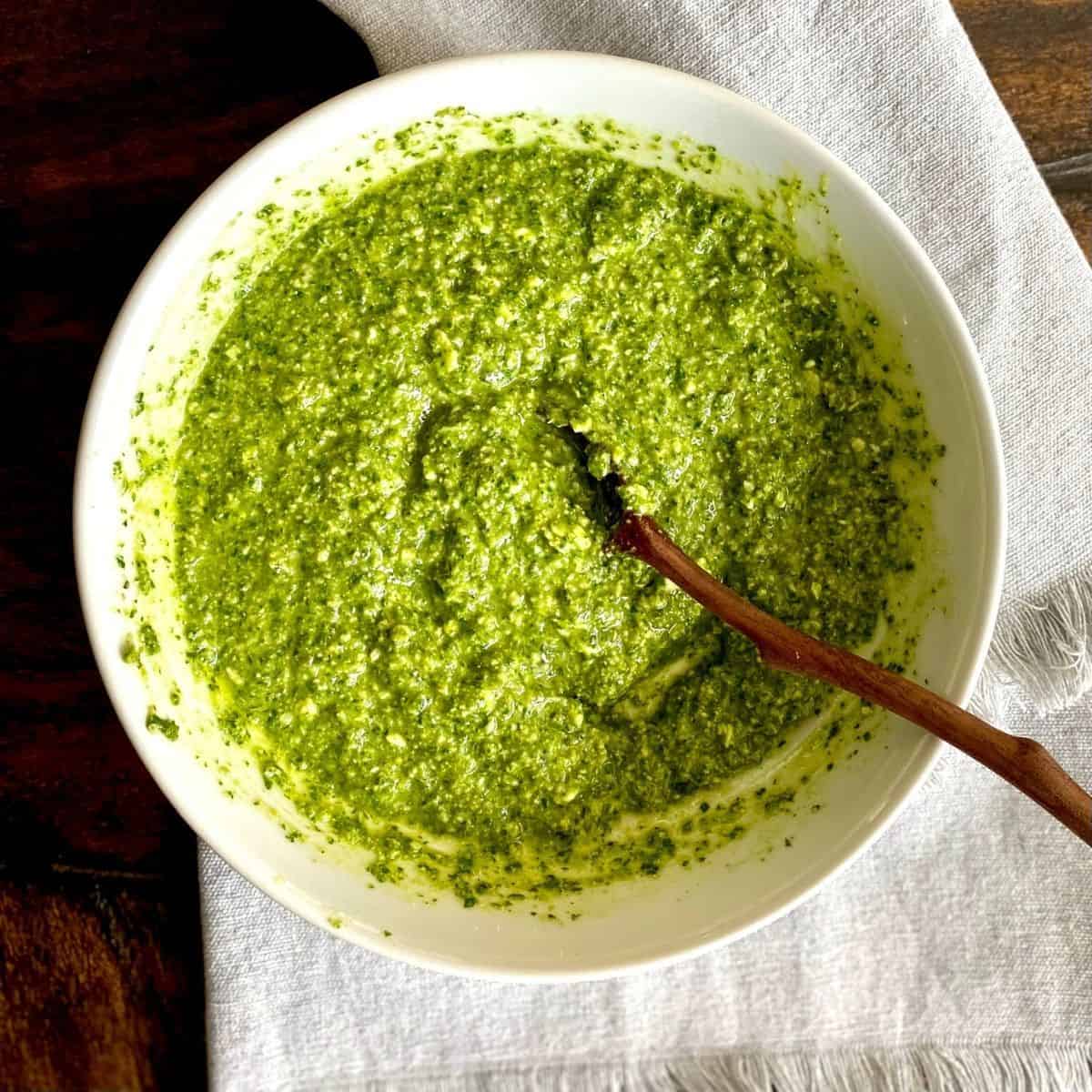
Summer Smells & The Simple Things
There are two smells that immediately transport me back to summer no matter what time of year it happens to be. The scent of tomato leaves rubbed between your fingers and the room-filling scent of fresh basil, no rubbing required- just sitting on the counter is enough. To me, summer isn’t complete without them.
When my girls were little we’d go for walks through the garden on summer mornings. We’d peek under the big, broad leaves of the zucchini & melon plants and scan the tall, sturdy stems of our peppers & tomatoes to see if any of them had “had babies” while we were sleeping. They would get so excited with each vegetable baby they’d discover! I always planted herbs in our vegetable gardens and the girls learned young to pick a few leaves of basil or lemon verbena as we made our morning rounds. I’d see them rubbing a leaf or two between their little fingers and holding them to their noses, inhaling as they walked.
Twenty-plus years later, I’ve watched my grand daughter do the same in her vegetable garden and it warms my heart. It’s the simple things (happy sigh) 🙂
A Taste of Summer Any Time of Year!
Ahhhhhhhhh…summer! It’s right around the corner and I’ve been thinking about all of the beautiful. fresh foods that come along with it for months now. Sometimes the waiting (especially here in Ohio!) feels like for-e-ver! Thankfully, one of those cornerstone-summer-ingredients is fairly easy to find year round- BASIL! So, you can make this pesto and enjoy all of the summer tastes and smells any time of the year!
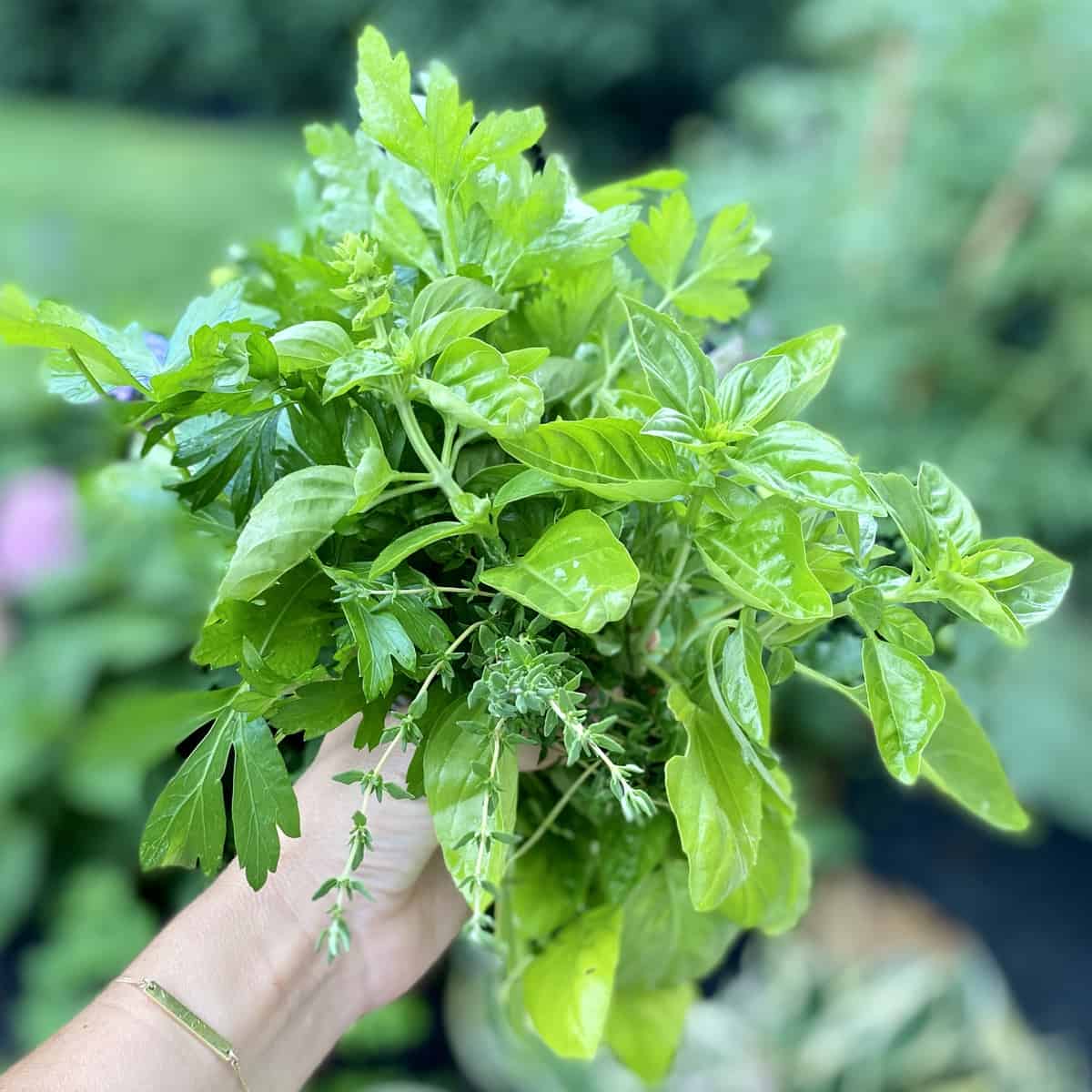
What Ingredients Do You Need To Make Pesto?
Pesto is traditionally 6 ingredients: basil, garlic, pine nuts, cheese, olive oil and butter. I like to use a little parsley, too (so mine has 7). Each ingredient serves a purpose and adds something special to the final sauce.
- Basil: Marcella Hazan says that “…the Genoese invented pesto as a vehicle for the fragrance of basil like no other, their own.” So it makes sense that the classic basil to use in pesto is Genovese, or Sweet basil. It has broad, glossy, fragrant leaves and makes a traditional pesto with an unmistakable basil taste. You can use other varieties of sweet basil (mammoth, globe, lettuce leaf) with excellent results.
- Garlic: Garlic is important in pesto. Because the garlic is raw it’s flavor is sharp and strong so start with 2 cloves (if they’re large, maybe just one) and chop it before adding so that it blends evenly (you don’t want to bite into a big piece of raw garlic). Please use fresh garlic, not pre-chopped in a jar. Because the sauce is uncooked there is a flavor difference.
- Pine Nuts: Ok, pine nuts are expensive, true. But they add such a beautiful, sweet, nutty flavor to pesto AND you only need a small amount (tip: pine nuts freeze well). Nuts not only add flavor but they also contribute to the creamy texture of pesto. You can use other nuts like almonds or walnuts, too, but pine nuts are classic (and so good!).
- Cheese: Parmigianno Reggiano is the real deal and my favorite. Salty, nutty, complex. You can use parmesan, which is less expensive and also delicious. PLEASE do not use the powdered “parmesan” in the green can- it is NOT the same. Pecorino Romano or Romano are also good but do have a stronger, sharper flavor so be aware of that. You want a dry, grainy cheese for the texture it provides. Don’t use a creamy cheese.
- Olive Oil: Use an olive oil that you like the taste of. I know that sounds obvious, but again, the sauce isn’t cooked, so you WILL taste each ingredient. Extra virgin olive oil is best for pesto.
- Butter: Truthfully, butter is an optional addition. I’m a texture girl and feel like it “completes” the sauce and gives it a silkier mouthfeel when all is said and done.
- Parsley: I’ve always used a portion of parsley in my pesto. Use flat leaf, not the curly kind. I LOVE basil, but can be overwhelmed by an all basil pesto and like to cut it just slightly with the fresh flavor of parsley. Adjust to your liking!
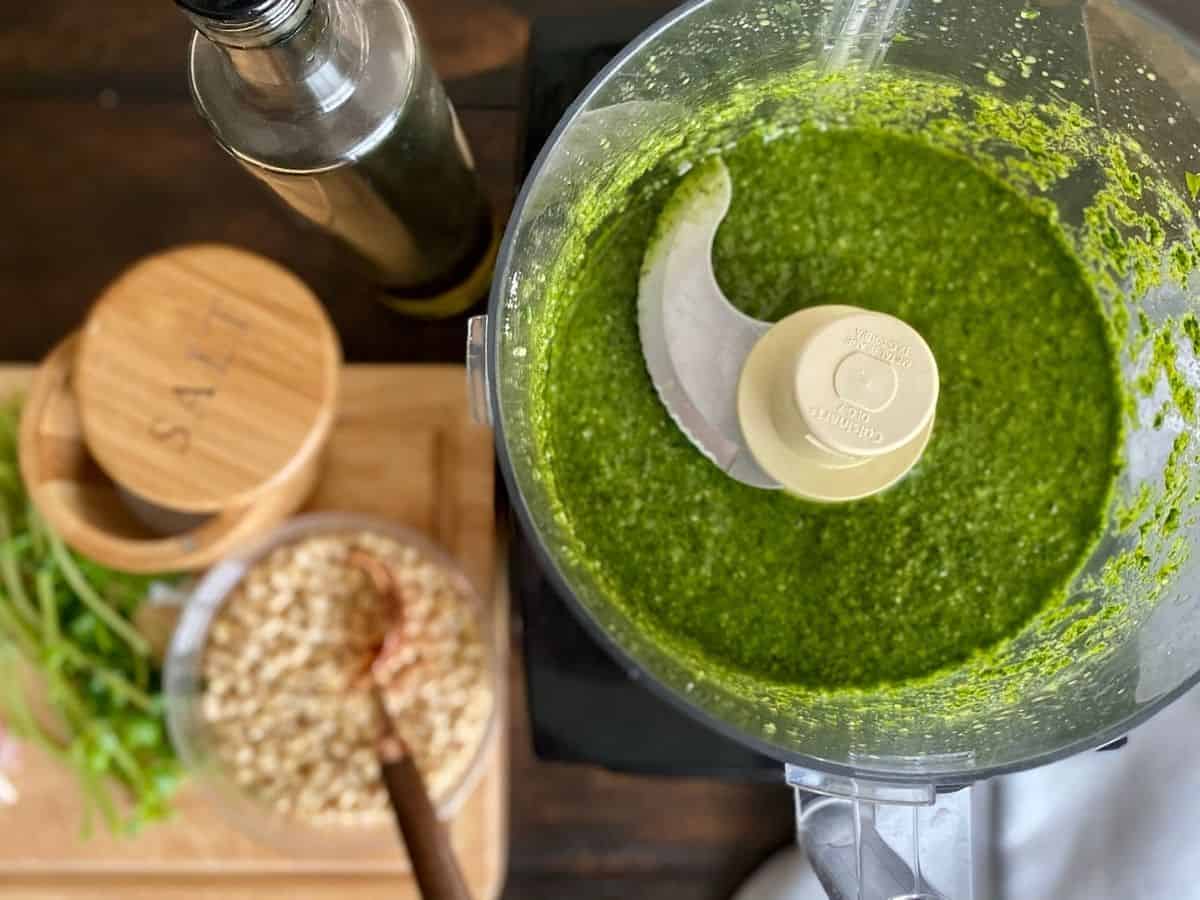
What Equipment Do You Need?
“Pesto” comes from the verb “pesta” which means “to pound” or “to crush” and refers to the traditional way of making pesto with a mortar and pestle. I imagine making pesto this way not only feels romantic and therapeutic, but also would provide a nice little upper arm workout 😉 . I’ve heard that the aroma and flavor is more pronounced, too.
…Maybe one day…
However, I’ve always used my food processor and it’s always been delicious. Place herbs in the bowl first, then nuts and chopped garlic (it’s important to chop the garlic, don’t put the cloves in whole)- everything except for the oil, cheese and butter. Just a few pulses, scrape the bowl, and then slowly drizzle in the olive oil through the feed tube with the machine running. Scrape again and process a few seconds more until everything is smooth and evenly blended.
Stir in the Butter and Cheese By Hand
Stirring the cheese and butter in by hand is totally worth the extra step. It creates a pesto with a really wonderful texture that you don’t get otherwise. Cheese first, stir until combined. Then add your softened butter and mix until smooth and no traces of butter pieces remain.
Taste Your Pesto
Does it need a little salt? Now’s the time to add a pinch. I don’t salt early on because the cheese might be enough. You can always add more, but you can’t take it out once it’s there!
How To Store Pesto
Pour your pesto in an airtight container (I like to use a glass jar because plastic will absorb the smell) and pour a thin layer of olive oil over the surface before sealing and refrigerating. Alternately, you can press plastic wrap over the surface (this helps prevent darkening when it’s exposed to air). It will keep in the refrigerator for 5 days.
Want to keep it longer? At the end of summer you might find yourself with an abundance of basil and want to make a big batch (or two or three) of pesto to save for winter. Pesto freezes beautifully! Make the pesto but don’t add the cheese or butter. Fill ice cube trays with pesto and freeze until solid. Once they’re completely frozen just pop them out of the trays and into a freezer bag! They’ll keep for 6 months. Add cheese and a little butter as you use them, if you freeze it WITH the cheese you’ll end up with an “off” flavor.
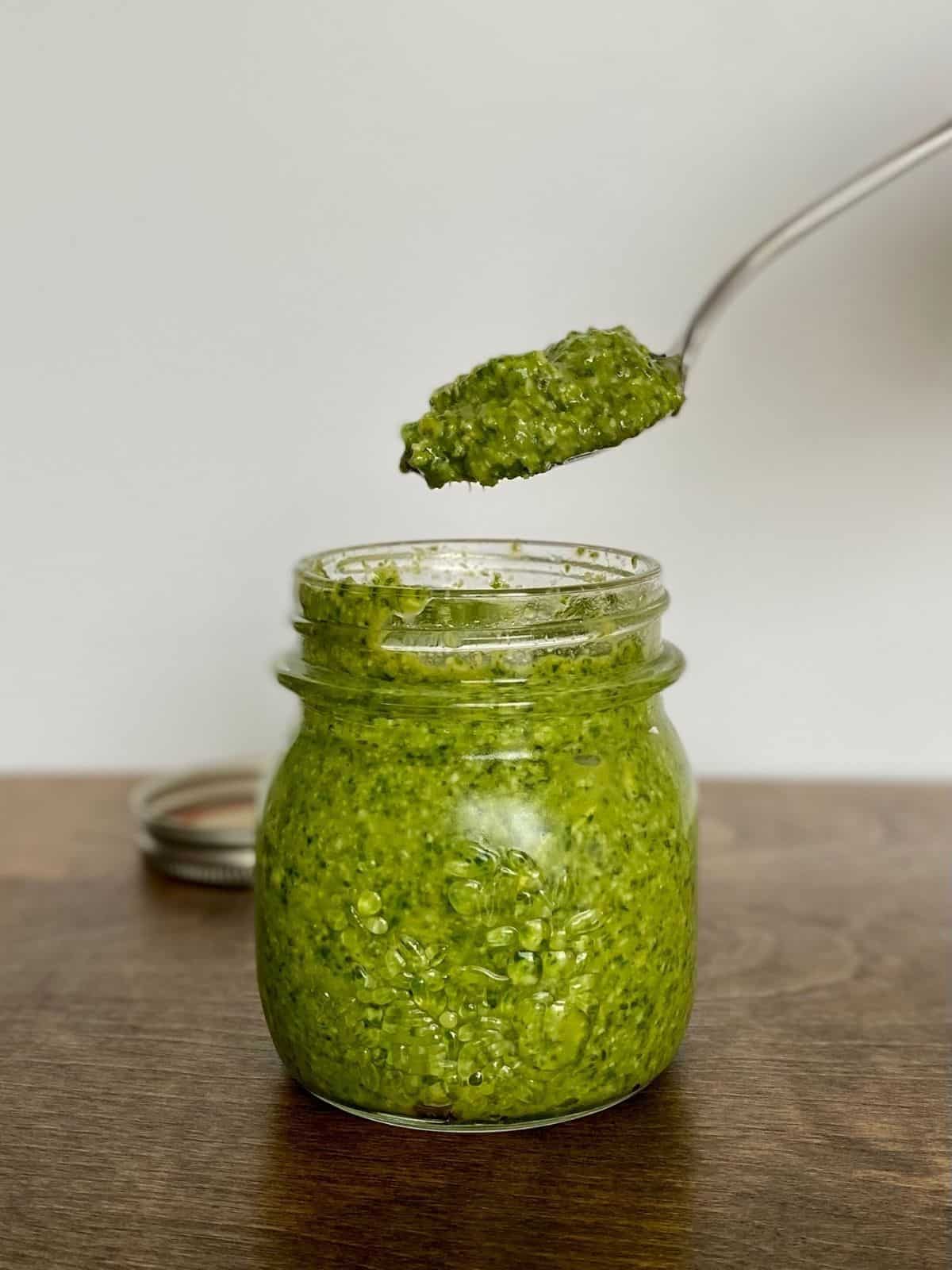
Ways To Use Pesto
There are SO MANY THINGS you can do with pesto! Here are a few of my favorites:
- The most obvious is as a pasta sauce. Thin with a Tablespoon or two of your pasta cooking water and toss with hot pasta (or gnocchi)
- Push a a little under the skin of chicken and roast or grill
- Use in bread like Pane Bianco
- Drizzle some over fresh tomatoes and sliced mozzarella for a summery Insalata Caprese
- Mix it into goat cheese or ricotta and spread on toasted crostini topped with roasted cherry tomatoes
- Toss with shrimp or spread over fish and grill
- Make a pesto mayonnaise to dress up your BLT (or really ANY sandwich!)
- Drizzle a little over soup (In the winter I add a frozen cube to soup towards the end of cooking)
- Swirl into mashed potatoes (if they’re goat cheese mashed potatoes EVEN BETTER!)
I’d love to hear your favorite ways to use pesto! Let me know in the comments 🙂
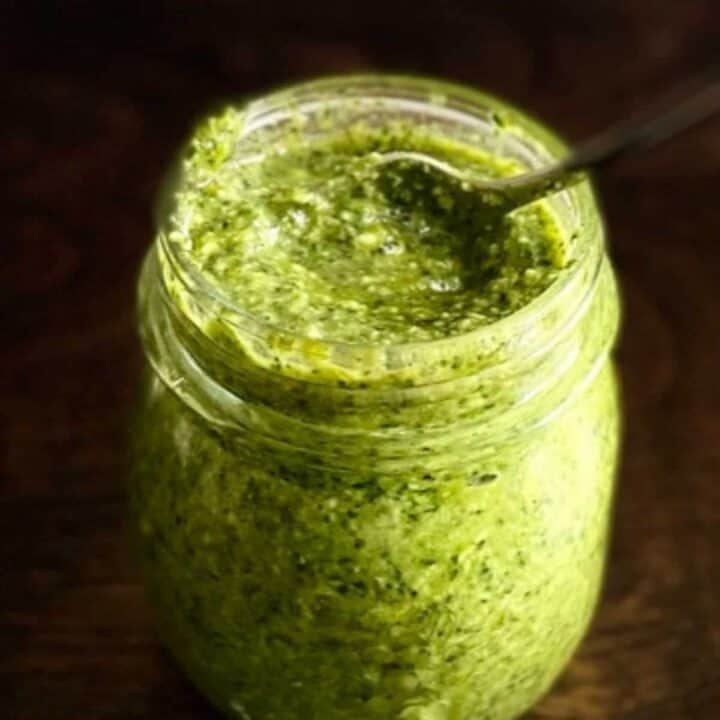
Classic Basil Pesto
Ingredients
- 1 1/2 cups fresh basil, lightly packed into measuring cup
- 1/2 cup fresh flat leaf parsley, lightly packed into measuring cup
- 1-2 garlic cloves, chopped
- 3 Tbsp pine nuts
- 1/2 cup extra virgin olive oil
- 1/2 cup plus 2 Tbsp grated parmigiano reggiano cheese
- 3 Tbsp unsalted butter, softened
Instructions
- In the bowl of a food processor fitted with metal blade place basil, parsley, chopped garlic and pine nuts. Close lid and pulse off an on until coarsely combined but pieces of herbs are still visible.
- Next, with processor running, slowly drizzle olive oil into basil mixture until mixture is completely smooth. You may need to scrape the bowl down once or twice.
- Scrape pesto into a bowl and stir cheese in by hand.
- Once cheese is added, stir in butter until completely combined.
- Taste and add a little salt, if needed
Store pesto in the refrigerator in an airtight container for up to 5 days. If you'd like you can drizzle a thin layer of olive oil over the top of the pesto to help keep pesto from discoloring.
*See notes for longer storage.
Notes
- For longer storage, prepare up to the point before adding cheese and butter, portion into ice cube trays and freeze. Once solid, pop out of the trays and into a freezer bag, squeezing out any air, and freeze up to 6 months for best flavor.
- Alternatively, you can also portion into small ziplock bags, flatten, squeeze out any air and seal. Freeze for up to 6 months.

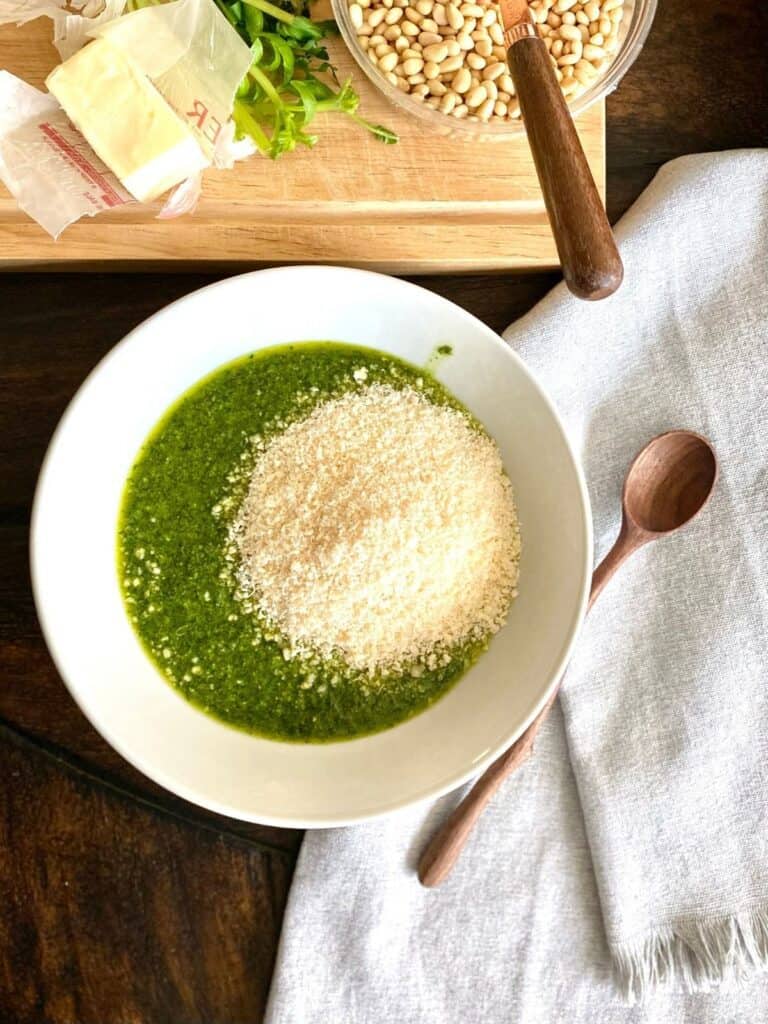
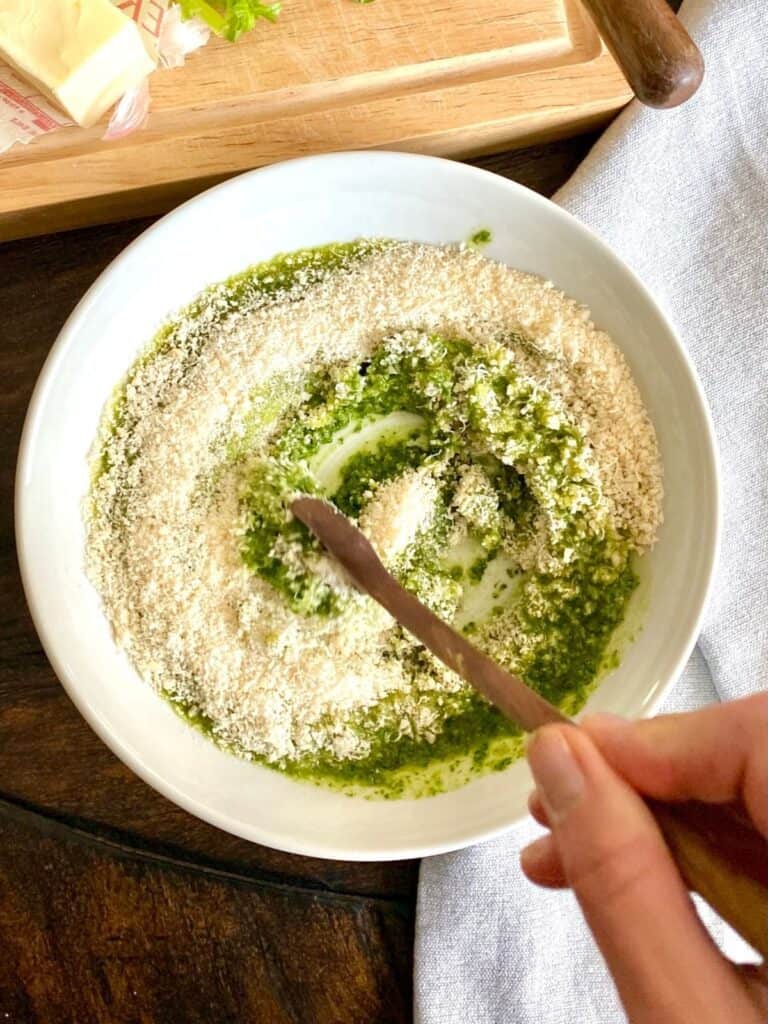
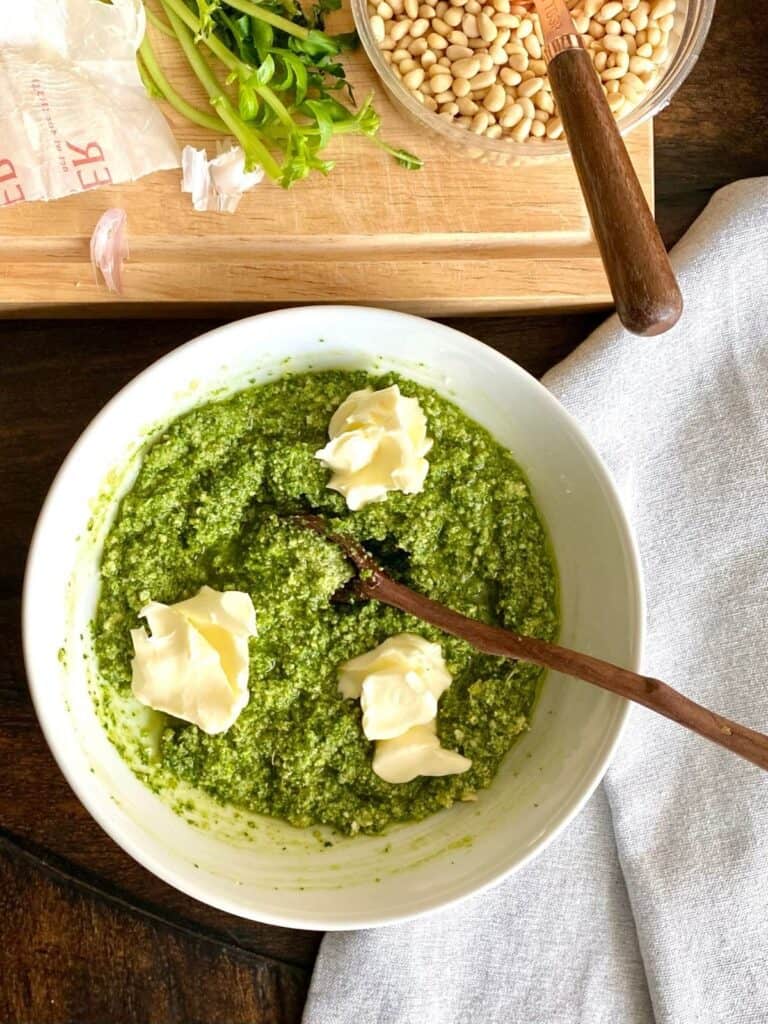
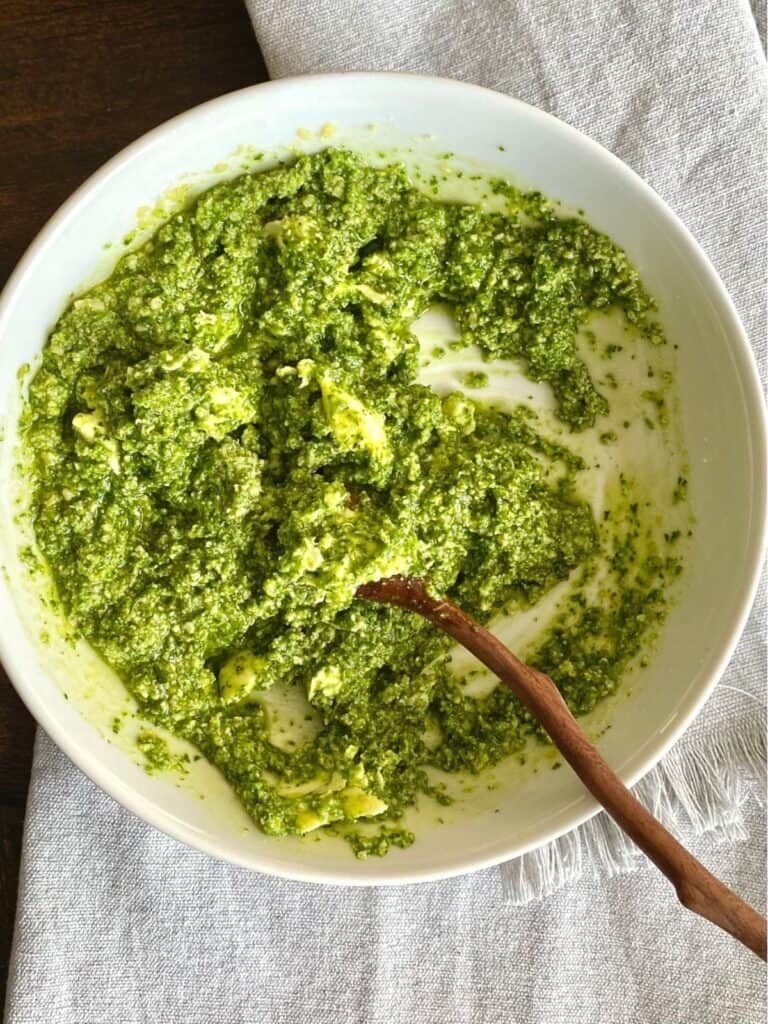
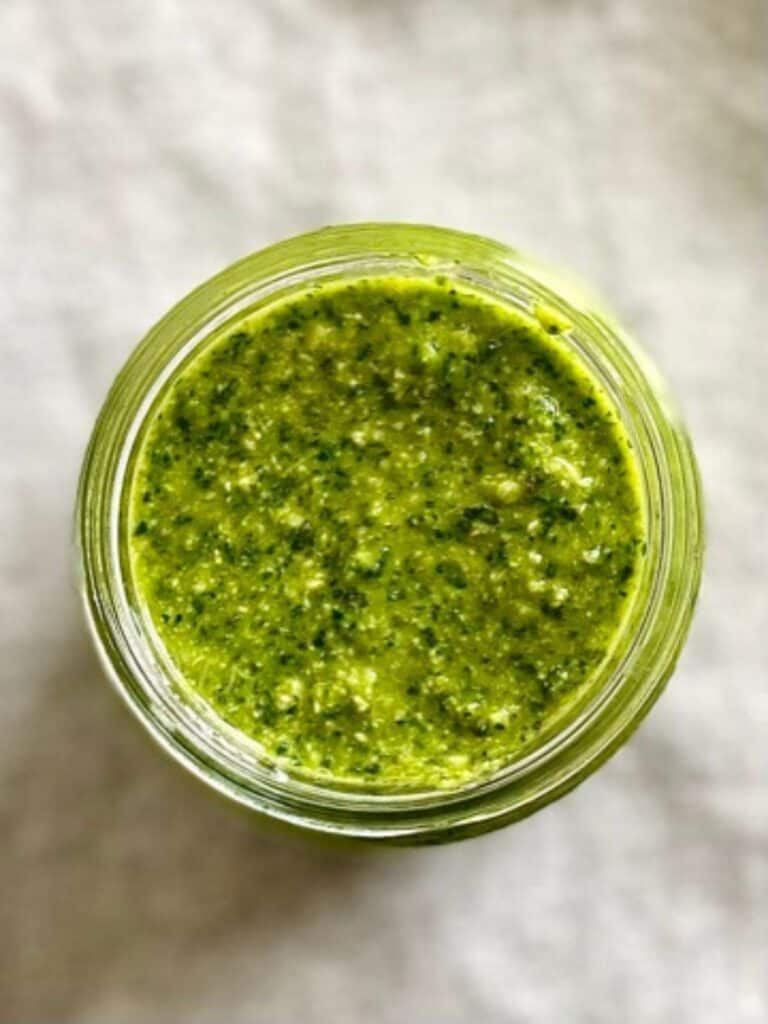

Leave a Reply